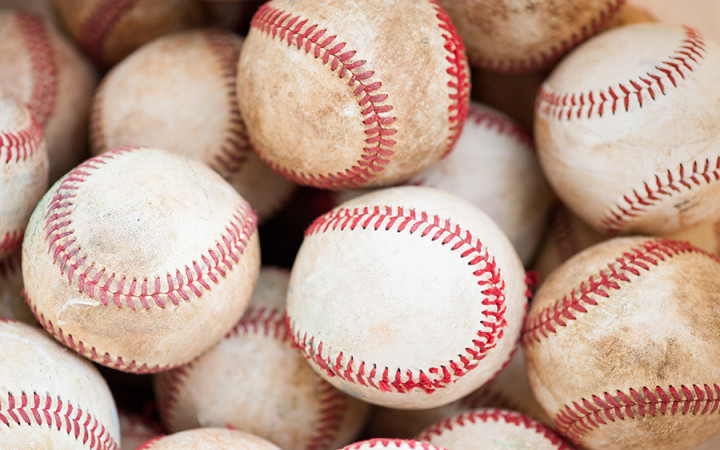Today’s Wonder of the Day was inspired by Grant from Belton, TX. Grant Wonders, “How much string is in a baseball?” Thanks for WONDERing with us, Grant!
Are you patriotic? What things come to mind when you think of America? The Statue of Liberty? The Fourth of July? Apple pie? Maybe you think of one of our favorites: a good old-fashioned game of baseball.
When it comes to American sports, baseball remains one of the most beloved American pastimes. Playing pitch and catch and batting a baseball around are part of the cherished memories of many kids.
If you've ever played with a baseball, you know that it's quite a bit different from other types of balls. For starters, it's not pumped full of air. It's quite hard and yet, when it's hit by a bat, it will bounce and skip across the ground. What exactly is inside a baseball?
If you cut a baseball in half, you would immediately notice that it's composed of several layers. We'll start with the core of the baseball and work our way out as we learn exactly what a baseball is made of.
The core of a baseball — known as the "pill" — consists of a small ball of cork encased in two thin layers of rubber. It weighs about half an ounce and is slightly less than three inches wide.
Special machines then wind various layers of yarn around the "pill" under high tension. Layer one contains 121 yards of four-ply, blue-gray wool yarn. The second layer contains 45 yards of three-ply, white wool yarn. The next layer consists of 53 yards of three-ply, blue-gray wool yarn. The final layer features 150 yards of polyester-cotton blend white yarn.
Once the "pill" is tightly wrapped with these layers of yarn, the entire thing is coated with rubber cement before it gets covered with two pieces of white cowhide. The covers of baseballs are hand-stitched using 88 inches of red cotton thread to create exactly 216 raised stitches.
Baseballs are tested before they're ready to be used in a game. For example, they must meet specific size requirements. Baseballs must weigh at least five ounces but not more than 5.25 ounces. They must also be at least nine inches but no more than 9.25 inches in circumference.
Baseballs must also meet standards of "liveliness." In scientific terms, a baseball's liveliness is known as the coefficient of restitution, which is the ratio of its relative speed after being hit to its relative speed before being hit.
To test liveliness, baseballs are shot from an air cannon at 85 feet per second at a wall made of northern white ash, which is what many baseball bats are made of. To be sufficiently lively, baseballs must bounce back at between 0.514-0.578 of their original speed.
Today, about 80% of baseballs used worldwide are made in China. However, official baseballs for Major League Baseball are made by Rawlings in Costa Rica under an exclusive contract. Each year, Major League Baseball teams use nearly one million baseballs over the course of a season.




